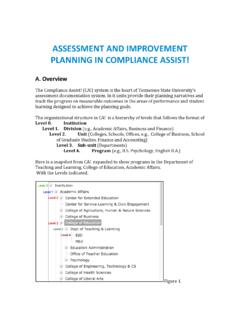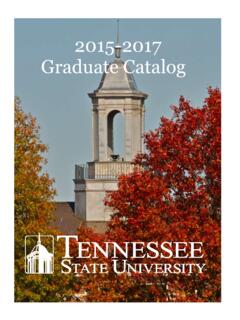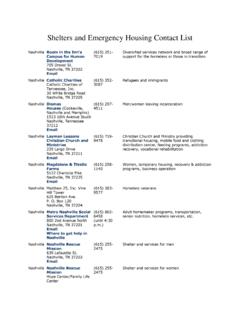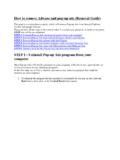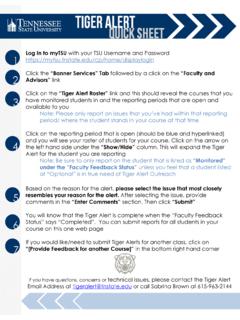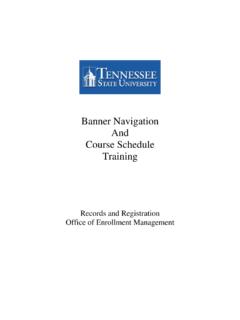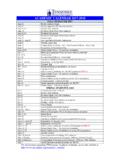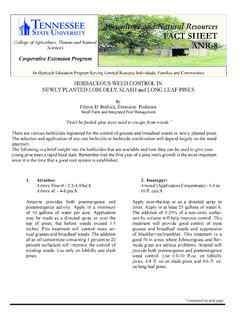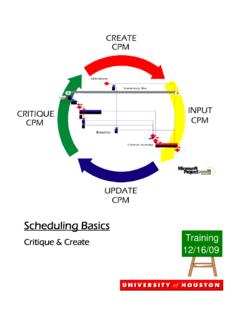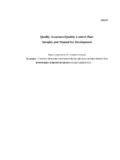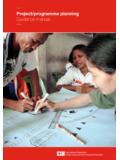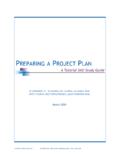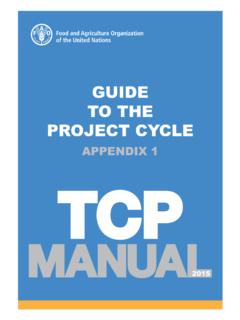Transcription of A MANUAL FOR DEVLOPING YOUR OWN SERVICE …
1 CENTER FOR SERVICE L EARNING AND CIVIC ENGAGEMENT. A MANUAL FOR DEVLOPING YOUR. OWN SERVICE -LEARNING. project : ENHANCING YOUR TEACHING AND. STUDENT LEARNING. Center for SERVICE Learning & Civic Engagement Box 9503. 3500 John A. Merritt Boulevard Nashville, TN 37209. Phone: 615-963-5383. E-mail: 2. Table of Contents Introduction . 3. What is SERVICE -Learning? .. 4. Why Do You and How Do You Assess SERVICE -Learning .. 4. Evaluation of Student Learning: Reflection and Preflection .. 5. Tools for Assessment .. 7. Rubric Examples .. 8. Examples of SERVICE -Learning Syllabi .. 10. Examples of SERVICE -Learning Projects by Major ..10. Worksheets 3. Introduction The staff of the Center for SERVICE Learning and Civic Engagement is here to support you in your implementation of SERVICE -learning and your professional growth as well. Here are some of the services we provide: Professional development: Conducting workshops, seminars, trainings, and providing mini-grants.
2 New opportunities for collaboration: We assist in connecting SERVICE -learning faculty across disciplines for collaboration in teaching, research, and SERVICE projects. Grant opportunities: We often assist faculty in pursuing potential sources of funding related to SERVICE -learning and have available SERVICE -learning information and data if needed for grant proposals. Typically, we work with faculty across disciplines in devel- oping projects for grant proposals. Provide options and inspiration for SERVICE -learning in your course: We assist in helping locate and approaching potential community partners; brainstorm ideas for ser- vice projects; and assist in building a SERVICE -learning course syllabus, design assign- ments, and reflection activities. Community representatives: If you do not already have contacts in the community, we assist in connecting you to relevant, knowledgeable community members to serve as guest speakers or for students to visit.
3 Safety concerns: Minimizing safety risks is of foremost importance. We can help as- sess the safety of various SERVICE options and assist you in training your students on staying safe while serving. Publicity: If you, your students, and your community partners have a powerful SERVICE - learning story to tell, we can assist in pitching your story to the University's Commu- nication team. We can also provide a photographer to commemorate your project . 4. What is SERVICE -Learning? SERVICE -Learning (S-L) has been identified as one of the major high impact prac- tices in higher education today. A form of experiential learning, S-L involves develop- ing partnerships between faculty-led academic courses and community-based organiza- tions. Through the community partnerships, students take part in hands-on SERVICE roles and projects through which they use their classroom learning and apply the course con- cepts while intentionally addressing the needs and/or interests identified by the commu- nity partners.
4 S-L experiences are deliberately organized in order for students to learn, apply skills and knowledge related to course learning objectives. An important piece of S-L, and one that differentiates it from community SERVICE , is that of reflection. Reflection allows for continued growth for the students and also provides a means for the instructor to evaluate the student based on measurable outcomes. Why Do You and How Do You Assess SERVICE -Learning? Assessment of S-L is a collaborative process involving student, faculty, and community partner. It is intended to demonstrate that course and community partner- ships meet both goals of the course and community needs. In other words, assessment measures the achievement of the S-L. Assessment of S-L will also be dependent in some part on the type of S-L project : direct, indirect, research based, or advocacy based. Definitions of project types are: 5. Direct: Person to person, face to face SERVICE projects Indirect: Working on broad issues, environmental projects Advocacy: Educating others about topics of public interest Research-based: Gathering and presenting information on areas of interest and need.
5 Evaluation of Student Learning: Reflection and Preflection Evaluation in S-L courses is the same as for any course. The focus of the evalu- ation is on the students' ability to meet course learning objectives. It is the same for ser- vice-learning as well. Students should be graded for their learning, not for their SERVICE (Howard, 2001). Community partners also participate in the evaluation of stu- dents' fulfillment of SERVICE objectives. Reflection is one of the most importance parts of S-L. It is used to connect course assignments to academic content and SERVICE and provides a means of allowing faculty to grade students' fulfillment of learning objectives. In fact, John Dewey stated We do not learn from experience We learn from reflecting on experience. Students should be able to think about their experience not only in the context of what they actu- ally did, but also to how it relates to their lives and decisions they will make in the fu- ture.
6 But even before reflecting, another important aspect is for students to think about the project before ever engaging in it. The term for this is preflection.. All reflection activities should come back to the question of how the SERVICE is connect- ed to learning and to the individual student's development (Facing the Future, 6. 2005). On this basis, preflection and reflection activities/assignments should offer a variety of options such as: Keeping a journal in which the student responds to specific reflection questions;. Writing a letter ( , to a political figure, to a recipient of SERVICE ) or a poem of re- flection;. Compiling statistics on your project and comparing with other similar projects;. Create a presentation for the class or larger audience;. Create a website or marketing plan for a non-profit organization;. Write an article for the school paper or local newspaper;. Take part in large group discussions.
7 Hold a debate with students around issues associated with your project ;. Develop an informational brochure to distribute to TSU students ( , safety issues). Research the easiest access routes for the wheelchair bound for each building on campus, draw a map, create handouts, provide for distribution. There are numerous questions that you might ask students to answer for their projects. Examples of preflection and reflection questions include: Preflection Very basic: What is SERVICE -learning? How can someone your age impact the world in a positive way? What about the S-L assignment makes you nervous? What about the S-L assignment are you most excited about? What are some things you think you can learn from this project ? Reflection The deepest learning occurs when you create a reflective classroom, rather than just adding a reflective component that does not affect the other components of your class (Eyler & Giles, 1997).
8 How do you feel about your project ? What have you learned that you didn't know at the beginning of the project ? What was the most valuable thing you learned from this project and why was it valu- able? What information did you find helpful? How do you think different about (developmental psychology, civics, geography, reading development) now that you have completed this project ? 7. Tools for Assessment As with any assignment, a rubric makes for ease of faculty to evaluate the stu- dents' work as well as providing the student an outline of what is expected of them for the S-L assignment. Often instructors will have their students complete a self- evaluation using the rubric and discuss the similarities and/or differences between stu- dent and instructor evaluation. Another part of the assessment process is for the com- munity partner to provide an evaluation of the student's work. This latter assessment need not be the same as the instructor's rubric.
9 Rubric categories will depend on the S-L assignments of the class. Usually S-L. rubrics will include formal reflections (more than 1) as well as a final individual or group project . Examples of S-L rubrics are provided below. The first example is one developed specifically for a project focusing on restoring the environmental health of a local watershed. The assignment included a presentation, allowed for bonus points, and deducted penalty points. It also included segments for both instructor comments and student comments. Points for each category ranged from 1 for poor work up to 5. points for excellent work. 12. 9. Example of a Final project which included a speech with PowerPoint or video: Presentation Rubric 5 3 1. Persuasive Argument Student speaks for at Student speaks for up to Students speaks for less least XX minutes, clearly XX minutes, presents than XX minutes, presents opinion and opinion but no facts presentation doesn't facts include opinion or facts Examples At least three specific Three examples are used Fewer than three examples which clearly but their connection to examples are given support the argument the argument is vague Speaking Presence Student makes eye Student looks up at Student rarely makes contact with audience, times, some difficulty eye contact, is unable to articulates argument, articulating argument, articulate argument, does not rely on notes occasionally uses notes reads directly from notes Total/15.
10 Visual Aid Rubric 2 1 0. Creativity- Unique and Colorful Neatness Professional quality Connection to SERVICE . obvious reflection of SERVICE activities Use of class work time- Time used efficiently and effectively Group Participation all members participated in creation of visual aid Total/10. project Rubric 5 3 1. Journal with at least 6. reflection activities Overall participation Total/10. Grand Total/35. Creating Your Own Rubric SERVICE -learning projects will depend upon the specific discipline and curriculum of the course. But, generally by answering some basic questions, you should be able to create your own rubric for your course. To get started, ask yourself questions such as the following: 10. 1. What are the different components of the project ? (List below). 2. What practices or learning do you want to emphasize (related to learning objectives or standards)? (List). 3. Next, rank the elements of the project from most important to least.
